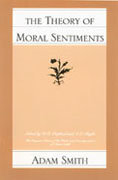b) The Coase theorem states that as long as negotiation between the two parties involved is relative costless, the "right" outcome will result regardless of how the judge might rule. Explain. 3) Consider the following productivityes: United States England Services 6 Units/hr. 3 Units/hr. Manufacturing 2 Units/hr. 6 Units/hr. a) Calculate the opportunity cost of services in the US and England b) Calculate the opportunity cost of manufacturing in the US and England. Who has the comparative advantage in services? c) Suppose that the average price of Services is $20 per unit and the average price of manufacturing is $20. What trade pattern will emerge? What will wages be in England and the US? d) Suppose that the inflation rate in England is 3% while the inflation rate in the US is 5%. How is your answer in (c) affected4) Suppose that you have the following demand and supply curve for sneakers: Q1 = 400-3P 0, = 200+ 2P a) Solve for the equilibrium price and quantity. b) Calculate consumer expenditures on sneakers Consumer expenditures would be price times quantity... $40*280 = $11,200 Price 40 11,200 Quantity 280 c) Calculate the elasticity of demand at the equilibrium found in (a) d) Would a 5% increase in price cause consumer expenditures to rise or fall? Explain.5) Suppose that you have the following demand curve: 0=120-4P +.0017 You know that the current market price is $10 and average income is $40,000. a) Calculate the markets consumer surplus. Price 40 CS 10 D Quantity 120 First, at an income of $40,000, solve for the price where quantity equals zero. Now, solve for the quantity at a price of $10 b) Calculate the market's total willingness to pay. Actual consumer expenditures are $10"120 = $1200, so total willingness to pay is $1200 + $1800 = $3000 6) Suppose that you have the following demand curve. Q =400-6P+.0051 Q Represents quantity demanded, P represents price and / represents average income. You know that the current market price is $20 and average income is $20,000 a) Calculate current demand. b) Calculate the price elasticity of demand.b) Calculate the price elasticity of demand. c) Calculate the income elasticity of demand 7) Suppose that you are concerned about drug use in the US. You are interested in what the impact would be if authorities could be more effective at getting drugs off the streets. The DEA has estimated the following data: Elasticity of Demand for Cocaine: -.55 . Elasticity of Supply: 1 . Current Market Price Cocaine: $80 per gram . Current Cocaine Sales (annual): 950M grams a) We are using a simply supply/demand framework: Q. =a+bp Q, = c+dP Use the data above to find the parameters a,b.c, and d. Use the data above to find the parameters a,b,c, and d. b =E. (950 80 =-6.53 a =Q-bP =950+6.53(80) =1472.4 c=0-dP =950-11.88(80) =0 b) As a check of the estimated model, solve for the equilibrium price and quantity. c) Suppose that the DEA is able to seize 100M grams of cocaine and take it off the market. What will happen to the equilibrium price and quantity?1) Suppose that you have the opportunity to invest $50,000 in a new restaurant in South Bend. (FYI: Dr. HG Parsa of Ohio State University has done a study that shows that 59% of restaurants fail within the first three years!). a) Given the following data, what is your opportunity cost here? Explain. Asset Annual Return 5 year Government Bond 1.25%% DJIA (Stocks) 7% "Junk" Bonds (CCC or below) 13% b) Now, suppose that as a part owner, you are allowed to eat for free as often as you like. How does this change your calculation from (a)? 2) Suppose that Amtrak builds a new train line from Chicago to Los Angeles. Unfortunately, the train line passes through thousands of acres of cornfields in lowa. When the train passes through the cornfields, it throws off sparks that destroy the corn. The corn farmers take Amtrak to court in an attempt to get the train line shut down. a) What would be the "right" outcome in this case? Explain











